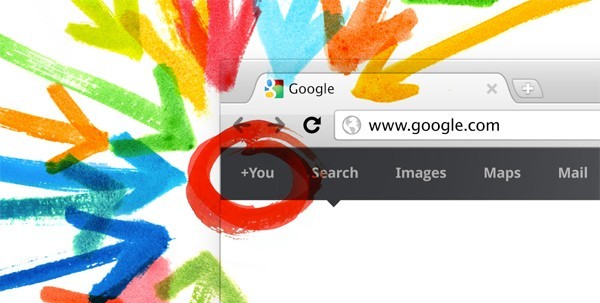
In one Samsung iPhone-mocking "Next Big Thing" commercial, an Apple fan laments: "If it looks the same, how will people know I upgraded?" Maybe that's the point of iPhone 4S -- people aren't suppose to know whether you have the new or older model. If that's the intention, and not some dumb-luck circumstance, then Apple CEO Tim Cook deserves high praise for brilliant, strategic execution. Rather than fraking up by not releasing iPhone 5 last year, Apple may have in iPhone 4S achieved a marketing milestone worthy of industry recognition -- or at least some PhD candidate's dissertation.
It's like this: Analyst data from several sources released this week shows surprising iPhone uptake, whether actual sales or simple consumer intentions to buy. The most compelling comes from NPD, which October/November US retail sales figures are nothing short of shocking. Year over year, Android smartphone OS sales share rose to 60 percent from 45 percent in third quarter 2011. During the same time frame, iOS went from 23 percent to 29 percent sales share. Both operating systems had dipped and rose during that year. But in just two months, October to November, Android fell share from 60 percent to 47 percent, while iOS rose from 29 percent to 43 percent. I see Apple's iPhone 4S strategy, not the new smartphone's actual sales, as the reason.
The Loss-Leader Gamble
In May 2011, I asked: "Can Apple stop the Android Army's advances?", then explained how -- by Apple "taking a dramatic risk to its handset margins: offer a $99 iPhone 4 available globally, following iPhone 5's release. Such an aggressive pricing strategy could be enough of what Apple needs to win the mobile platform wars".
I reasoned that a redesigned iPhone with features like LTE would be compelling enough to drive new handset sales, while opening new markets with lower pricing -- get the people who wouldn't spend $199 or more or simply couldn't afford to. I wrote: "Apple should let iPhone 4 be the loss leader, allowing more people to buy into the platform rather than letting them go to Android".
Apple's executive team chose such an approach but executed with greater confidence in their platform, while taking greater risk. They may have also done something simply brilliant by making iPhone 4 and 4S indistinguishable to the eye.
Apple priced iPhone 4 at $99, but didn't retire the 3GS, which price went to zero. iPhone 3GS is free with two-year contract. That approach opens up substantially more of the low-end market, where Apple risked more sales losses to Androids otherwise. NPD's US retail sales data shows just how successful is the strategy. The top-three selling smartphones during October and November: iPhone 4S, 4 and 3GS. Samsung Galaxy S 4G and S2 rank fourth and fifth.
There's a certain cool factor to Apple products, but also people wanting to fit in and be part of the "in-crowd". For $99, iPhone 4 looks just as good as any of the three iPhone 4S models -- 16GB, 32GB and 64GB. The cheaper iPhone 4 is 8GB. For everyone else, those looking for free, there is iPhone 3GS.
Same `Ol, Same `Ol
In early October, the day after Cook launched iPhone 4S, I called the strategy "sheer brilliance". I wrote:
Apple has bet iPhone's future on sameness and demonstrated corporate arrogance that creates opportunity for other phone makers. For them, iPhone 4S is another kind of brilliance -- a shining light of opportunity. They may also see in Cook weakness, that the genius of logistics lacks the qualities that made Jobs a visionary leader and in process an uncharacteristic risk taker among CEOs...Which brilliance will outshine the other -- Cook's choosing the sameness and safety of iPhone 4 or the light of opportunity competitors see in last year's model? Perhaps the market will answer in 6 months or even a year.
Well, so much for it taking six months to find out. If the sameness was part of a deliberate strategy, where iPhone 4 and 4S look alike but are priced for different markets, then Cook actually took considerable risk. It's counter-intuitive and contrary to predecessor Steve Jobs' approach of pushing on to the next big thing. The whole strategy -- three iPhones priced from zero to $399 and 4 and 4S look-a-likes -- aligns with the kind of logistical brilliance Cook has shown at Apple. I see now that iPhone 5 would have distracted buyers rather than open up the big sales spigot. Cook has made a big play to gain platform market share fast.
You will read lots of Apple Fanclub posts this week about how well iPhone 4S is selling. But in the hard analysis, I expect iPhone 4 and 3GS sales matter more. Apple's fourth calendar quarter earnings call, on January 24, should reveal something. While Apple doesn't break out model sales, a decline in margins would indicate that the older models are selling well.
To be clear: iPhone 3GS free to the consumer doesn't mean carriers pay nothing. Somebody still shells out hundreds of dollars. According to Apple Store, retail price for iPhone 3GS is $375 and $549 for iPhone 4. Sales tax of 7.75 percent (the rate here in San Diego) is calculated from that price, which is how to figure out what a phone really costs. Sales tax is based on what the carrier pays, not what you do.
Apple has stopped revealing average selling prices, but dividing total revenue by unit sales, when revealed later this month, should give pretty good indication. A substantially lower number than previous quarters would give good sense just how well iPhone 4 and 3GS are selling.
Sustainability now is the question. According to Changewave data released yesterday, 54 percent of North American consumers plan to buy an iPhone within 90 days -- that's from end of December, and it's an 11-point drop from October. The difference isn't necessarily negative, since many respondents may already have purchased an iPhone (or Android, for that matter).
Something else: Apple launched iPhone 4S with new US national and regional carriers, with Sprint being particularly important. Apple's earnings results and future sales data and buying intentions surveys should reveal how much pent-up demand there affected sales in context of the other aforementioned factors.










 Well, here's a strange
Well, here's a strange  If you’re looking for an alternative to Adobe Reader then there are plenty of tools available, each promising that they’ve the speed and feature set required to become your preferred PDF viewer.
If you’re looking for an alternative to Adobe Reader then there are plenty of tools available, each promising that they’ve the speed and feature set required to become your preferred PDF viewer. Photo editing and manipulation tools are not exactly in short supply but those that get the balance between the number of features and ease of use are few and far between. Despite featuring an interface that is somewhat off-putting to start with,
Photo editing and manipulation tools are not exactly in short supply but those that get the balance between the number of features and ease of use are few and far between. Despite featuring an interface that is somewhat off-putting to start with, 